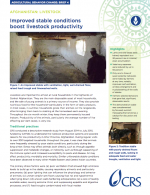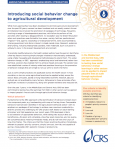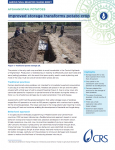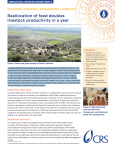Learning Briefs | October 17, 2019
Improved stable conditions boost livestock productivity
AGRICULTURAL BEHAVIOR CHANGE: BRIEF 4
Livestock are important to almost all rural households in the highlands of Central Afghanistan. They are the main disposable asset of most households, and the sale of young animals is a primary source of income. They also provide nutritious food for the household—particularly in the form of dairy products. In most cases, in summer, households graze their animals on the rangelands, often bringing them back to stabling at the homestead each evening. Throughout the six‑month winter, they keep them permanently housed indoors. Productivity of the animals, particularly the average number of live offspring per dam (ewe), is very low.
AGRICULTURAL BEHAVIOR CHANGE BRIEFS: INTRODUCTION
AGRICULTURAL BEHAVIOR CHANGE: BRIEF 1
AGRICULTURAL BEHAVIOR CHANGE: BRIEF 2
AGRICULTURAL BEHAVIOR CHANGE: BRIEF 3
AGRICULTURAL BEHAVIOR CHANGE: BRIEF 5





